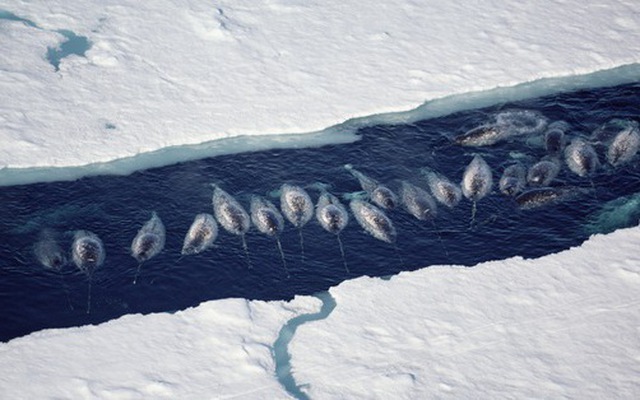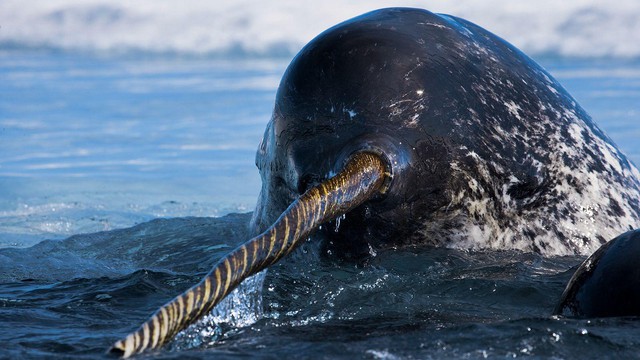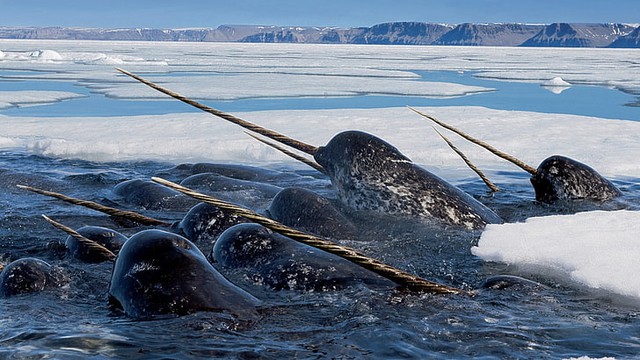The Enigmatic North Atlantic Narwhal: Unveiling the Astonishing Traits of Ocean’s Most Mysterious Creatures
The Fascinating World of Narwhals: Unraveling the Mysteries of the Arctic’s Unicorn
Narwhals, with their intriguing name and appearance, are among the most captivating creatures on our planet. These marine mammals not only capture our imagination but also serve as a living treasure trove of marine biology knowledge that continually piques the interest of scientists.
In recent years, biologists have uncovered remarkable insights about these Arctic Ocean inhabitants in unexpected ways. Narwhals are renowned for their ability to dive to depths of up to 2 kilometers, relying on sea ice for their existence, and exhibiting complex behaviors.
The most distinctive feature of the narwhal is the twisted tusk that protrudes from the upper left jaw of the male.
In fact, the complexity of their behavior has led scientists to apply chaos theory—a mathematical field of study—to investigate them, particularly in the populations of East Greenland.
“While ocean sensors attached to animals continue to evolve and collect more data, there is a lack of appropriate methods to analyze profiles of unusual behaviors (in this case, unicorns – sea unicorns),” said Evgeny A. Podolskiy, a geoscientist at Hokkaido University in Japan and the lead author of the new study.
In an effort to address this gap, Podolskiy collaborated with Mads Peter Heide-Jørgensen, a marine biologist at the Greenland Institute of Natural Resources, to develop a novel method for deciphering patterns in the seemingly chaotic behavior of narwhals.
These techniques, according to the researchers, have the potential to unveil hidden states known as “attractors,” towards which chaotic systems tend to gravitate. They can help scientists uncover hard-to-detect patterns in complex processes, including the enigmatic behavior of narwhals.
It has been observed that narwhals typically “take a lunch break” near the water’s surface, but if they dive around this time, they go very deep. In contrast, twilight or night dives are usually shallower but involve more “aggressive” activity, possibly related to feeding. Their preferred prey is squid, which is active and easily hunted at night.
The study also reveals that narwhals adapt their behavior in response to the distribution of sea ice. Researchers report that during times when sea ice is more abundant, narwhals not only reduce their surface activity but also exhibit more intense diving behavior.
While the narwhal is not currently listed as endangered by the International Union for Conservation of Nature, they are still considered vulnerable due to human activities, including shipping, water pollution, and climate change-induced ice melting. Some populations may be at risk of disappearing.
The survival of narwhals is closely tied to drifting sea ice, which is rapidly declining due to global climate change, making insights into their behavior invaluable for their protection.
Chaos theory may also prove useful in analyzing the behavior of many other animal species, the researchers suggest. For instance, it could aid in understanding the challenges faced by other Arctic wildlife due to rising temperatures and melting sea ice, although this approach is still in its infancy. More research (and more narwhal observations) will be necessary, as the new study is based on the behavior of just one individual.
Hits: 9










